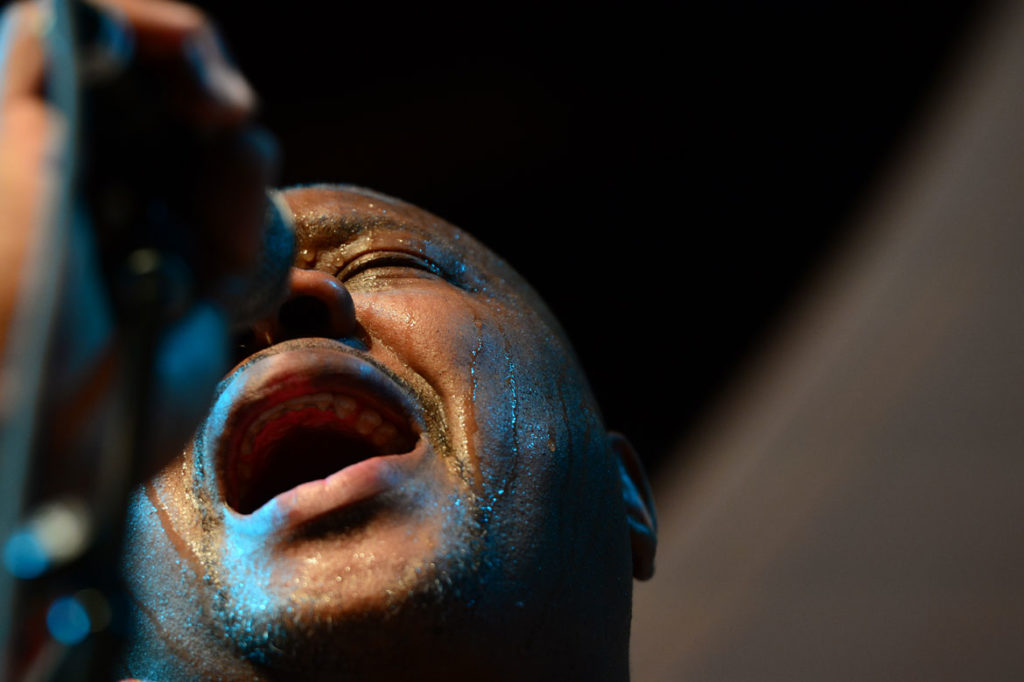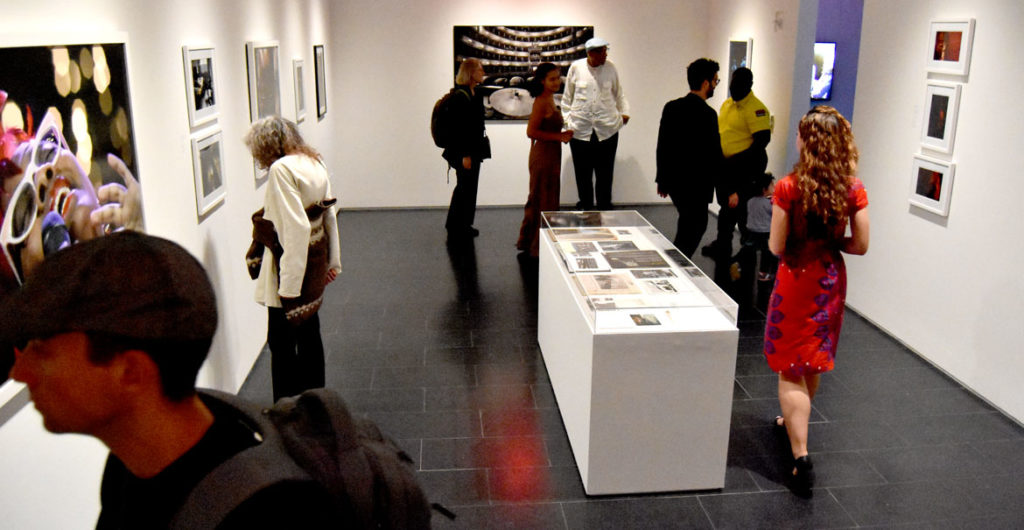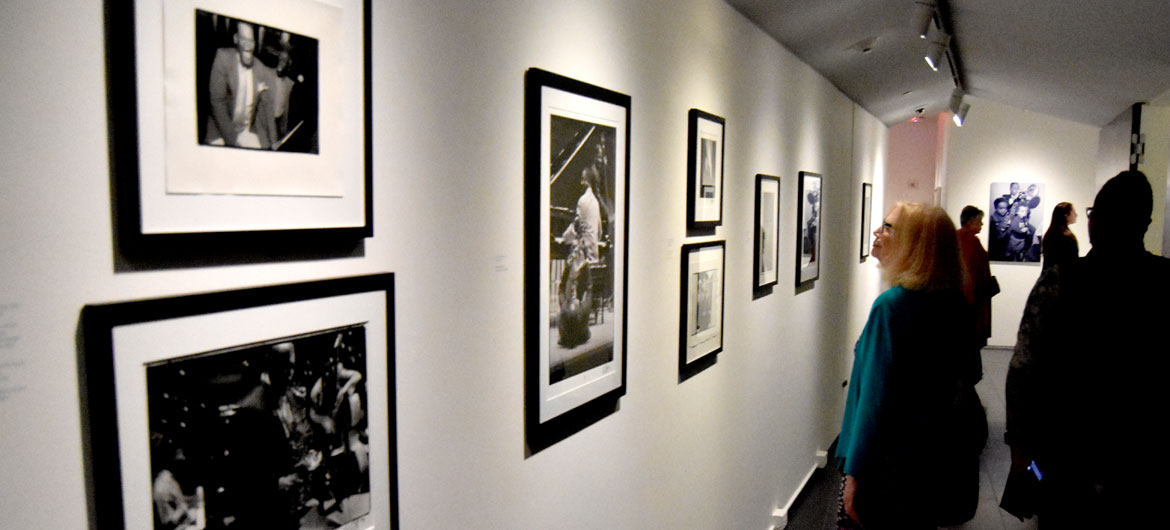“You didn’t get a whole lot of history lessons about African-American culture in school,” Frank Stewart told The New York Times in 2017. “My work is culturally motivated. I wanted to know where these polyrhythms, the roots of the foods and this rich cultural history came from.”
One of the results of his searching is “The Sound of My Soul: Frank Stewart’s Life in Jazz,” an exhibition of his photographs on view at the Ethelbert Cooper Gallery of African & African American Art at Harvard University’s Hutchins Center, 102 Mount Auburn St., Cambridge, from Sept. 16 to Dec. 13, 2019.
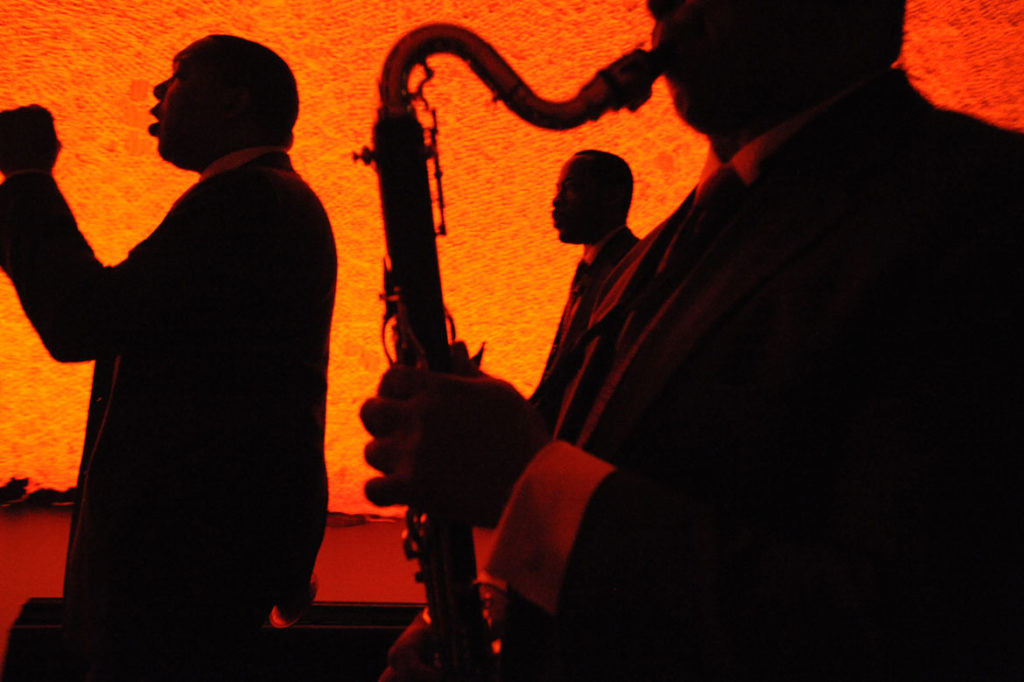
Touted as “first museum exhibition of Stewart’s jazz photographs,” curated by Ruth Fine, it features some 80 photographs he’s made since 1973. The pictures include jazz legends Miles Davis, Art Blakey, Sonny Rollins, Max Roach, Dizzy Gillespie, Dexter Gordon, Lionel Hampton, Wynton Marsalis. The photos show musicians performing at funerals, Second Line marches, practice sessions, jazz clubs and concert halls.
Stewart’s life has taken him from Nashville, Memphis, Chicago and New York, places where he grew up, to New Orleans, Atlanta, Los Angeles, Havana, Liberia, Nigeria, Mali, Ivory Coast, Ghana.
In 1963, he traveled with his mother, the model and dancer Dorothy “Dotty” Jean Lewis Stewart, to the March on Washington for Jobs and Freedom. He borrowed her Kodak Brownie camera to take his first photographs. “There was a lot of black and white people down there showing solidarity. So that’s what I took pictures of,” Stewart told the Jazz and Lincoln Center blog in 2015. He continued photographing with a camera borrowed from a friend’s dad.
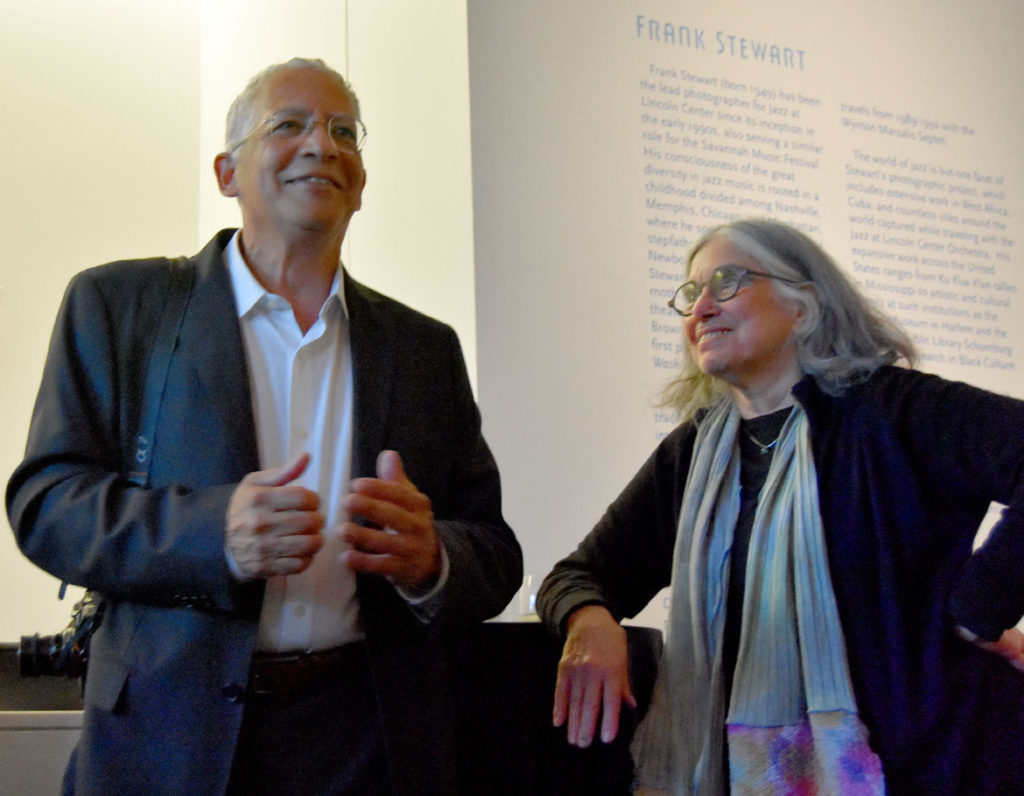
Stewart (born 1949) learned photography from Robert Sengstacke, a Chicago friend whose family owns Chicago Defender; from Roy DeCarava (“I had never seen the black form depicted in such a manner—with dignity, pride, and humanity,” Stewart has said) and Garry Winogrand. He worked with the artist Romare Bearden from 1975 until his death in 1988.
Stewart has photographed the Ku Klux Klan in Jacksonville, Mississippi; the 1984 Los Angeles Summer Olympics; the devastation of New Orleans’ Lower Ninth Ward by Hurricane Katrina in 2005; environmental damage along the Louisiana Coast from global warming and oil drilling; forest fire damage in Colorado and California.
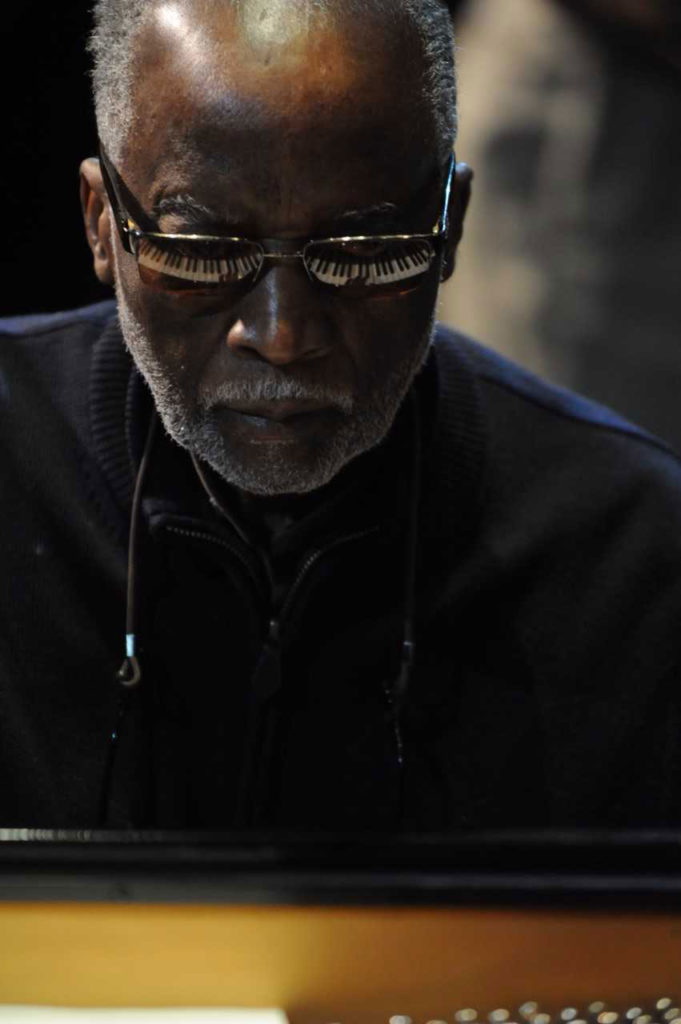
He connected with jazz musicians early on, through his stepfather, the renowned jazz pianist Phineas Newborn Junior (1931-1987), who brought him to concerts at New York clubs on 52nd Street and in Greenwich Village in the late 1950s.
Stewart began photographing jazz musicians when he drove equipment and photographed concerts for pianist and band leader Ahmad Jamal and his group from 1975 to ’80. Subsequently, he photographed in clubs and at jazz events in New York and Chicago.
“Jazz photography was different; it was a way to document cats that never got documented,” Stewart told the Jazz and Lincoln Center blog in 2015. “You know, the cats that were on the periphery that you never see but needed to be documented because they were on the scene too. Some of them would be on the scene then all of a sudden they’d go back home because they couldn’t make it.”
Stewart met trumpeter and composer Wynton Marsalis in 1988, then traveled with his Septet from 1989 to ’92. Since 1993, Stewart has been the road manager and senior staff photographer for the Jazz at Lincoln Center Orchestra, where Marsalis is managing and artistic director.
If this is the kind of coverage of arts, cultures and activisms you appreciate, please support Wonderland by contributing to Wonderland on Patreon. And sign up for our free, weekly newsletter so that you don’t miss any of our reporting.
